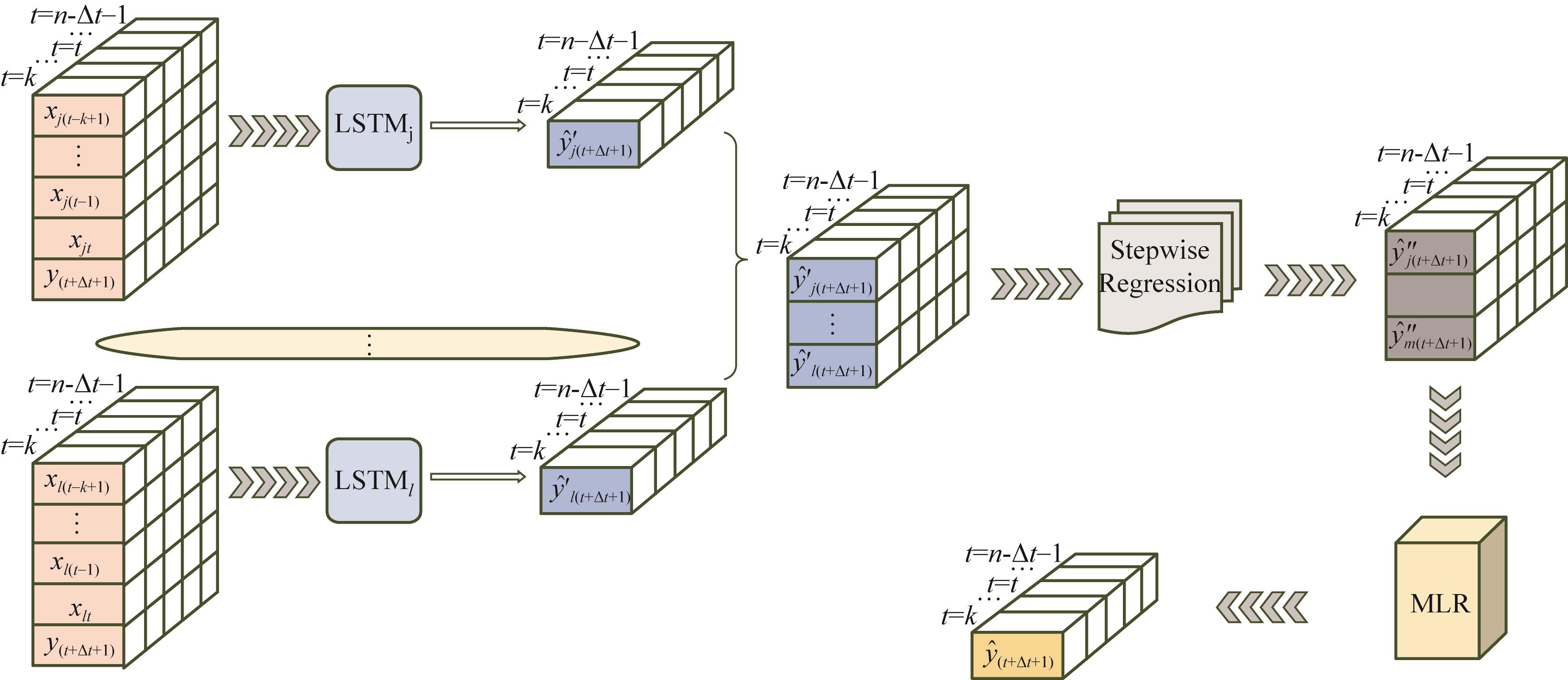| 1 |
LE Tianhao, WANG Yuan, LIU Lang, et al. Unexpected air pollution with marked emission reductions during the COVID-19 outbreak in China[J]. Science, 2020, 369(6504): 702-706.
|
| 2 |
ZHAO Shuyun, ZHANG Hua, XIE Bing. The effects of El Niño-Southern Oscillation on the winter haze pollution of China[J]. Atmospheric Chemistry and Physics, 2018, 18(3): 1863-1877.
|
| 3 |
ZHANG Qiang, ZHENG Yixuan, TONG Dan, et al. Drivers of improved PM2.5 air quality in China from 2013 to 2017[J]. PNAS, 2019, 116(49): 24463-24469.
|
| 4 |
XU Peng, CHEN Yongfen, YE Xiaojian. Haze, air pollution, and health in China[J]. The Lancet, 2013, 382(9910): 2067.
|
| 5 |
朱彤, 尚静, 赵德峰. 大气复合污染及灰霾形成中非均相化学过程的作用[J]. 中国科学: 化学, 2010, 40(12): 1731-1740.
|
|
ZHU Tong, SHANG Jing, ZHAO Defeng. The roles of heterogeneous chemical processes in the formation of an air pollution complex and gray haze[J]. Scientia Sinica Chimica, 2010, 40(12): 1731-1740.
|
| 6 |
PETÄJÄ T, JÄRVI L, KERMINEN V M, et al. Enhanced air pollution via aerosol-boundary layer feedback in China[J]. Scientific Reports, 2016, 6: 18998.
|
| 7 |
熊远南. 基于改进灰色-多元回归组合预测模型的燃煤电厂智慧水务研究[J]. 化工进展, 2020, 39(S2): 393-400.
|
|
XIONG Yuannan. Smart water affair of coal-fired power plant based on improved combination prediction model of grey system and regression analysis[J]. Chemical Industry and Engineering Progress, 2020, 39(S2): 393-400.
|
| 8 |
GARIAZZO C, CARLINO G, SILIBELLO C, et al. A multi-city air pollution population exposure study: combined use of chemical-transport and random-Forest models with dynamic population data[J]. The Science of the Total Environment, 2020, 724: 138102.
|
| 9 |
靳文博, 敬加强, 田震, 等. 基于最小二乘支持向量机的蜡沉积速率预测[J]. 化工进展, 2014, 33(10): 2565-2569.
|
|
JIN Wenbo, JING Jiaqiang, TIAN Zhen, et al. Prediction of wax deposition rate based on least squares support vector machine[J]. Chemical Industry and Engineering Progress, 2014, 33(10): 2565-2569.
|
| 10 |
张浩, 于君毅, 刘晓慧, 等. 基于广义隐马尔可夫模型的PM2.5浓度预测[J]. 化工学报, 2018, 69(3): 1215-1220.
|
|
ZHANG Hao, YU Junyi, LIU Xiaohui, et al. Prediction of fine particulate matter concentrations based on generalized hidden Markov model[J]. CIESC Journal, 2018, 69(3): 1215-1220.
|
| 11 |
SUN Wei, ZHANG Hao, PALAZOGLU A, et al. Prediction of 24-hour-average PM2.5 concentrations using a hidden Markov model with different emission distributions in Northern California[J]. Science of the Total Environment, 2013, 443: 93-103.
|
| 12 |
姚羽曼, 罗文嘉, 戴一阳. 数据驱动方法在化工过程故障诊断中的研究进展[J]. 化工进展, 2021, 40(4): 1755-1764.
|
|
YAO Yuman, LUO Wenjia, DAI Yiyang. Research progress of data-driven methods in fault diagnosis of chemical process[J]. Chemical Industry and Engineering Progress, 2021, 40(4): 1755-1764.
|
| 13 |
宋泓阳, 孙晓岩, 项曙光. 人工神经网络在化工过程中的应用进展[J]. 化工进展, 2016, 35(12): 3755-3762.
|
|
SONG Hongyang, SUN Xiaoyan, XIANG Shuguang. Progress on the application of artificial neural network in chemical industry[J]. Chemical Industry and Engineering Progress, 2016, 35(12): 3755-3762.
|
| 14 |
GIRSHICK R. Fast R-CNN[C]//2015 IEEE International Conference on Computer Vision. IEEE, 2015: 1440-1448.
|
| 15 |
HE Kaiming, GKIOXARI G, DOLLÁR P, et al. Mask R-CNN[C]// 2017 IEEE International Conference on Computer Vision. IEEE, 2017: 2980-2988.
|
| 16 |
SILVER D, SCHRITTWIESER J, SIMONYAN K, et al. Mastering the game of Go without human knowledge[J]. Nature, 2017, 550(7676): 354-359.
|
| 17 |
SENIOR A W, EVANS R, JUMPER J, et al. Improved protein structure prediction using potentials from deep learning[J]. Nature, 2020, 577(7792): 706-710.
|
| 18 |
JUMPER J, EVANS R, PRITZEL A, et al. Highly accurate protein structure prediction with AlphaFold[J]. Nature, 2021, 596(7873): 583-589.
|
| 19 |
ZHAO Jiachen, DENG Fang, CAI Yeyuan, et al. Long short-term memory-fully connected (LSTM-FC) neural network for PM2.5 concentration prediction[J]. Chemosphere, 2019, 220: 486-492.
|
| 20 |
马双忱, 林宸雨, 周权, 等. 基于深度神经网络的脱硫系统预测模型及应用[J]. 化工进展, 2021, 40(3): 1689-1698.
|
|
MA Shuangchen, LIN Chenyu, ZHOU Quan, et al. Prediction model of FGD system based on deep neural network and its application[J]. Chemical Industry and Engineering Progress, 2021, 40(3): 1689-1698.
|
| 21 |
方黄峰, 刘瑶瑶, 张文彪. 基于LSTM神经网络的流化床干燥器内生物质颗粒湿度预测[J]. 化工学报, 2020, 71(S1): 307-314.
|
|
FANG Huangfeng, LIU Yaoyao, ZHANG Wenbiao. Biomass moisture content prediction in fluidized bed dryer based on LSTM neural network[J]. CIESC Journal, 2020, 71(S1): 307-314.
|
| 22 |
GHORBANI A, OUYANG D, ABID A, et al. Deep learning interpretation of echocardiograms[J]. NPJ Digital Medicine, 2020, 3: 10.
|
| 23 |
DU Mengnan, LIU Ninghao, HU Xia. Techniques for interpretable machine learning[J]. Communications of the ACM, 2019, 63(1): 68-77.
|
| 24 |
GREFF K, SRIVASTAVA R K, KOUTNIK J, et al. LSTM: a search space odyssey[J]. IEEE Transactions on Neural Networks and Learning Systems, 2017, 28(10): 2222-2232.
|
| 25 |
SUN Wei, ZHANG Hao, PALAZOGLU A. Prediction of 8 h-average ozone concentration using a supervised hidden Markov model combined with generalized linear models[J]. Atmospheric Environment, 2013, 81: 199-208.
|
| 26 |
徐丹妮, 王瑾婷, 袁自冰, 等. 汾渭平原复杂地形影响下冬季PM2.5污染分布特征、来源及成因分析[J]. 环境科学学报, 2021, 41(4): 1184-1198.
|
|
XU Danni, WANG Jinting, YUAN Zibing, et al. Temporal-spatial variations, source apportionment, and formation mechanisms of PM2.5 pollution over Fenwei Plain, China[J]. Acta Scientiae Circumstantiae, 2021, 41(4): 1184-1198.
|
 ), 冉进业2, 张今1, 杨鑫3(
), 冉进业2, 张今1, 杨鑫3( ), 张浩1(
), 张浩1( )
)
 ), RAN Jinye2, ZHANG Jin1, YANG Xin3(
), RAN Jinye2, ZHANG Jin1, YANG Xin3( ), ZHANG Hao1(
), ZHANG Hao1( )
)



